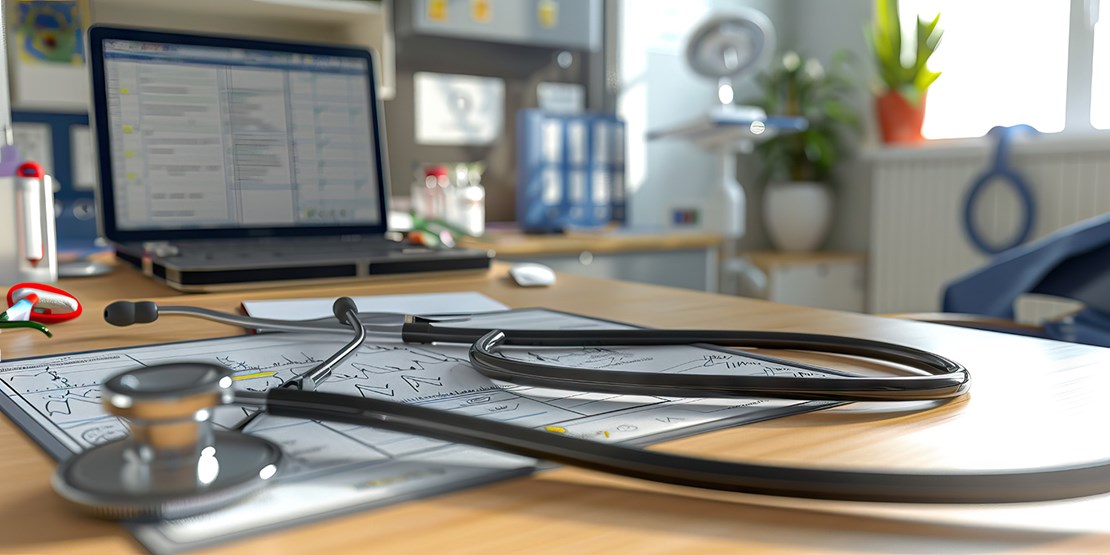When Northamptonshire’s 92 GP practices needed support to implement a project to migrate to a single domain, which included the refresh of over 3,000 devices, Arden & GEM’s IT service was tasked with delivery.
As a result of collaborative cross-organisational working between the project team, GP practices, ICB and logistics supplier, the project was delivered on time and within budget. All practices were successfully transferred to an Azure single domain - with approximately 2,000 new and 1,000 refreshed devices - to improve access to information and enable collaboration across primary care.
The challenge
Within the Northamptonshire primary care estate there are 92 GP practice sites using over 3,000 devices. To enable practices to work efficiently, more easily collaborate and access data securely, all sites needed to operate on a newly created single domain.
Arden & GEM’s GPIT service was tasked by NHS Northamptonshire ICB to deliver the domain migration while refreshing the estate’s devices, using a combination of both new and reimaged computers. The entire project needed to be delivered within one year, with consideration given to:
- transferring data to OneDrive
- creating new user accounts
- data migration to SharePoint
- integrating third party software
- testing suitability of existing machines to be reused.
Our approach
A dedicated project team was established - bringing together project managers, support officers and project engineers under the leadership of a programme lead.
The project team began working on the best way to implement a new domain and deliver devices for the customer, using learning from other systems supported by Arden & GEM who had undergone similar projects.
Managing resources and logistics
Determining the requirements for sites was a complex exercise which had to cover:
- The number and type of devices needed at each practice
- The configuration needed for each user and each device
- The number of engineers needed for each site visit and the properties/layouts they would have to work within.
As device and data transfers needed to be undertaken within normal practice hours, the team had to liaise closely with onsite managers to schedule work so that it minimised clinical impact. This required ongoing flexibility and negotiation.
Follow up visits and actions were also needed to manage the ‘snagging list’ of issues with devices and sites. These needed to be carefully scheduled with a limited number of engineers available.
Overcoming device shortfalls and run rate delays
Nine months into the device refresh process, the project team escalated to the programme lead a shortfall in reusable devices required to complete the project. This issue stemmed from the poor quality of hard drives within returned devices, leaving a limited number Windows 11 compliant PCs that could be reused. This shortfall left a deficit of approximately 400 devices.
As a result of this investigation, the programme lead identified the device refresh run rate was behind schedule, with around half the estate to complete and only three months left to deliver, which presented a significant risk to the project delivery and agreed timescales.
With no flexibility in the timeline and no extra budget available, the programme lead approached their equipment logistics partner, Greenworld Technologies, to look for a collaborative resolution to the challenge. A plan was developed that would allow the device shortage to be resolved and the existing machine refresh to complete.
- The timeframe for the reimaging process was reduced from seven weeks to under one week.
- The number of deliveries was increased from one to three per week.
- Additional devices were provided within the budget to create a buffer while the new process was implemented.
With these adjustments, the project and logistics teams devised a new plan based on the accelerated reimaging and increased deliveries allowing a realistic deployment schedule to meet the project requirements.
The outcomes
The project was delivered on time and cost effectively as a result of the commitment of and collaboration between stakeholders.
Timely delivery: Despite challenges, the team successfully delivered over 3,000 devices to 92 GP sites, meeting the tight deadline.
Cost efficiency: The revised plan, combined with Greenworld’s support, ensured that the project remained cost-effective and on budget.
Customer satisfaction: The collaborative approach and continuous communication ensured customer needs and expectations were met, resulting in high customer satisfaction.
Quality assurance: Through proactive management of device quality, including reimaging and repurposing returned devices, we ensured compliance with IT security standards and compatibility with future operating systems.
Practices are now on a single cloud-based domain which offers a number of benefits:
- All staff have access to an extensive yet consistent stack of applications through M365, improving communication and collaboration
- The move away from locally based servers means that infrastructure is more robust
- Users can safely and securely access data while working offsite through Multi Factor Authentication.
The teamwork demonstrated in overcoming the challenges of the project cemented partnerships with suppliers. This collective effort was key to achieving common goals for the benefit of the customer, the GP practices and ultimately the patient.
"The Northamptonshire migration project was not on track for completion on time or within budget. The Arden & GEM project team made the impossible possible in an extremely professional and non-confrontational manner. The programme lead focused all her energy on delivering, allowing the results to follow. We all enjoyed working on this project and ultimately got the desired result as a team."
David Aitken, Managing Director at Greenworld Technologies
Find out more about how our IT service supports NHS organisations to deliver their objectives.
